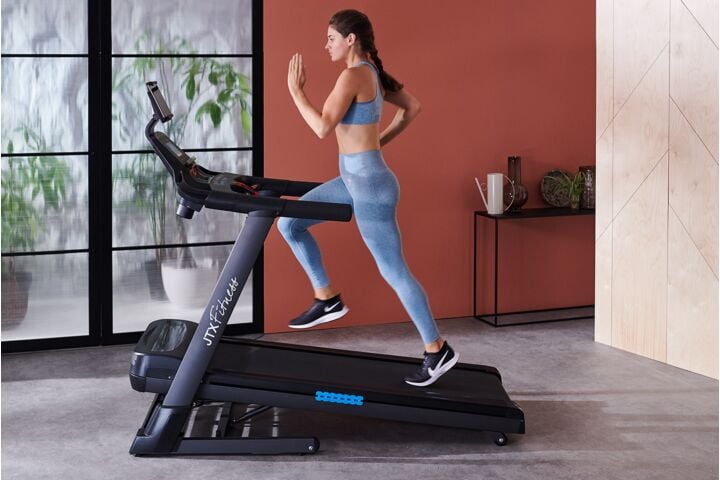
Marathon Training Plan & Top Tips
Training for a full marathon really does deserve the kudos it gets. It’s tough, intensive and you have to put the miles in. We’ve put together a 17 week Marathon Training Plan to help guide you from beginner to completer. Alongside the marathon training plan, we've included our marathon training top tips to help you smash those 26 miles and make sure you look after your body in the process.
Marathon Top tip #1: INCLUDE YOGA AND PILATES
Training for a marathon will challenge the muscles in your legs. Your quadriceps, hamstrings and calves will become tight and over worked if they aren’t stretched out. Break up your training with at least one session of Yoga or Pilates per week. This will not only restore the flexibility you need in your hips and hamstrings but build on your core strength; helping to keep your posture and gait solid and stable whilst you clock up the miles.
Yoga in particular can help to bring focus to your training and breath, by practising holding your attention on your body, its movement and form.
Tip: As you run, try to bring your attention to your feet. How do the soles feel as they land on the ground? Could each step be lighter and more even?
Marathon Top tip #2: INVEST IN DECENT TRAINERS
It may seem like a no-brainer to some, but if you're not wearing trainers that fit properly you will very quickly find problems travelling up from the arches of your feet to your knees and hips. This contributes to injuries like shin splints.
Make sure you invest in a suitable pair of trainers that have been fitted in a running shop. They will be able to tell you what to look for, how your feet should feel in the trainers and even study your gait on a treadmill. Invest in these at the beginning of your training; you want them to be ‘broken in’ and not to rub on race day. The same applies to your clothing on race day.
Marathon Top tip #3: ENHANCE & TRACK YOUR RUNS
There are plenty of different Apps available to enhance your training. Strava will help you plot and map your runs/benchmark yourself against other users and monitor your stats – heart rate, pace, distance etc.
The Kinomaps app plays motion videos as you train, its compatible with selected JTX treadmills, bikes & cross trainers so if you are training indoors or in the gym you can boost your training by watching moving footage from around the world. It can help on a grey British day to feel like you are running alongside the beach, or following a forest trail.
Marathon Top tip #4: LIVE LIKE AN ATHLETE
To gain fitness, your body must first be over-loaded (this is why you have to push yourself to see change) and then it will adapt. Without proper fuel and rest your body won’t have the facilities to adapt. Each time we train intensively the muscle fibres tear slightly, the healing process allows them to grow and this is how we see muscle gains.
Without the right amount of properly timed protein and carbohydrates after a training session the body has less of the resources it needs to heal. Consume a combination carbohydrate-protein food or drink/shake within 30 to 60 minutes after any race, speed workout or long run. Examples would be 150 to 300 calories of low-fat chocolate milk, a recovery-sports drink, flavoured yogurt, or toast and peanut butter. After long or hard runs, you should increase your protein intake. On easy days, you still need a post-run snack but you don’t need as many calories or as much protein.
Your body also needs sleep to adapt. Sleep deprivation has a negative impact on training. Sleep an extra minute per mile you train per week, so if you run 30 miles add half an hour to the seven and a half to eight hours that the average person needs.
The Marathon Training Plan
Here is a breakdown of the type of runs included in our Marathon Training Plan:
- Easy Run – sustain a relaxed and easy pace – you should be able to form full sentences
- Steady run – a sustainable pace similar to that of marathon pace.
- Threshold run – this should be ‘comfortably hard’ – it shouldn’t feel just ‘hard’ which is the pace of…
- Interval run – ‘hard’ – pushed to 85-90% of your max effort
- Hill run - sprint up the incline and walk down the decline. Repeat.
- Fartlek run – this will be a combination of many different paces
- Long run - the longest run of your week, increasing in distance over the plan. You really can’t run too slowly on a long run – but running too fast can hinder your recovery time and risk injury.
- Marathon pace – calculated by your predicted finish time – you may get an idea of this having completed the Half Marathon.
- Half Marathon pace – as above, you can calculate this off your 10k speed and factor in extended distances – There are plenty of tips online of how best to calculate these paces.

More related articles
12 Week Half Marathon Training PlanMarathon Training Plan
Marathon Training Tips









